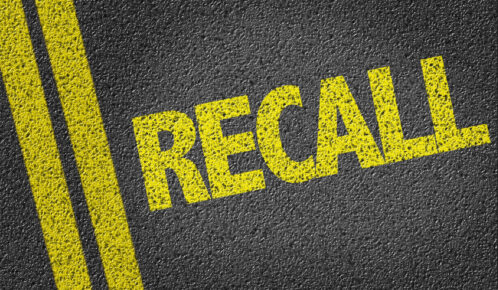Hiring the right wrongful death lawyer is one of the most important steps in a wrongful death lawsuit. Your lawyer guides you through other steps of filing a successful wrongful death lawsuit. These steps include investigating the death, determining the potentially liable party (or parties), and gathering the required evidence and documentation. Your lawyer initiates settlement negotiations with the liable party’s insurance company, files a suit if necessary, and represents you at trial. Your lawyer also helps you determine whether you qualify to file a wrongful death lawsuit and how long you have to do so.
Table of Contents

Steps in a Wrongful Death Lawsuit in Illinois
Hire the Right Lawyer for Your Case
Wrongful death cases are often highly sensitive and involve confusing laws and strict deadlines. You need a lawyer with a proven record of winning wrongful death claims to stand a better chance of obtaining reasonable compensation.
A knowledgeable wrongful death lawyer knows all the statutes and precedents applicable to your claim. The lawyer will help you prepare and file a claim that complies with all the laws and requirements of your state. Your lawyer can also help you understand what happens in a wrongful death lawsuit. The lawyer can also advise you on the best steps to streamline your case progress and improve your odds of recovering damages. Your lawyer may, for instance, discourage you from engaging your deceased loved one’s insurance company without legal representation.
On top of legal advice, working with a lawyer guarantees you peace of mind. You can grieve and prepare to give your deceased loved one a decent send-off without worrying about deadlines and other aspects of your case.
Open an Investigation into Your Loved One’s Death
The details of a wrongful death case may sometimes fail to paint a complete picture of what happened. Witnesses may provide a contradicting story about what occurred due to genuine confusion. A liable party may give a contradicting account to conceal implicating information or deflect blame to avoid bearing liability. A lawyer can thoroughly investigate your loved one’s death to establish what happened.
Let us assume your loved one died due to medical negligence. In this case, your lawyer could examine medical records and consult a medical expert witness to establish if the doctor who handled your loved one’s case satisfied the acceptable medical standard of care. You could have grounds for a wrongful death lawsuit against the doctor if the investigation finds that failure to fulfill the relevant medical standard of care directly caused your loved one’s death.
Let us say your relative died after using a defective product. In this case, your lawyer could investigate the product and work with engineers, doctors, and other expert witnesses to prove the product directly contributed to your relative’s death.
If your family member died in a car accident, a lawyer could examine the police report and witness statements to determine what caused the accident and who was at fault. The lawyer could obtain footage from a surveillance camera near the accident scene. The footage may show that the other driver acted negligently or disobeyed a traffic law.
Determine the Potentially Liable Party (or Parties)
The liable party (or parties) in a wrongful death case often depends on the circumstances of the fatal accident. Your lawyer can review the investigation findings to identify the at-fault person or entity.
If your loved one died due to medical malpractice, the doctor who treated your loved one might be legally responsible. If your relative died in a car accident caused by another driver’s negligence, the other driver might be legally responsible.
A product’s manufacturer can be the at-fault party if a defective product kills your family member. Other parties in the distribution chain, including wholesalers and retailers, could also be potentially at fault in such a product liability case.
Assemble the Required Evidence and Documentation
Your lawyer will guide you through the process of collecting the evidence and official documentation that your case requires. The medical documents of your deceased relative are the most crucial evidence to obtain in a wrongful death lawsuit.
Doctor’s notes, evaluation reports, diagnostic test results, and prescription medications are examples of medical documents required in wrongful death lawsuits involving medical malpractice. A lawyer can review these documents to identify proof that might link your loved one’s death to the medical provider’s negligence.
A death certificate is another crucial piece of evidence in your wrongful death claim. The certificate provides the date and time of death. It also shows the cause of your loved one’s death.
Police and autopsy reports are other pieces of evidence that can support a wrongful death suit. A copy of a police report can help prove a wrongful death case involving a car accident. A copy of a detailed autopsy report can reveal whether a medical mistake caused the death.
Other crucial forms of evidence in a wrongful death case include:
- Pictures or videos
- Witness statements
- Expert witness testimony
- Family records
- Payslips, tax information, and financial records
Initiate Settlement Negotiations
Your lawyer will prepare and send a demand letter to the liable party’s insurer after determining the value of your case. Calculating how much a wrongful death claim is worth involves adding the deceased’s funeral expenses, medical bills, lost income, loss of support, and pain and suffering of the surviving family members.
Your lawyer will request the highest settlement amount based on the defendant’s coverage limit. The insurance company will likely disagree with the requested amount and send a lowball settlement offer. Lengthy negotiations may be necessary before a reasonable settlement agreement is reached in some cases.
File the Lawsuit
If settlement negotiations are unfruitful, your lawyer will file a complaint and other supporting documentation with the circuit court clerk’s office. The complaint outlines the lawsuit details. It also outlines facts and laws supporting your claim and the compensation amount your lawyer is asking for on your behalf.
Litigation
Litigation allows your lawyer to use discovery to collect as much information about your case as possible. The discovery phase can last weeks or several months, depending on the nature of the case. Average wrongful death cases will need only a few weeks of discovery. Those involving multiple defendants and witnesses might require months of discovery.
Pre-trial and trial happen during the litigation phase. Also, your lawyer or the other party may request a mediation session facilitated by an impartial mediator during the litigation phase. The case goes to full trial if no settlement agreement is reached. The judge or jury hears both sides, issues a verdict, and assigns a monetary award.
Who Can File a Wrongful Death Claim?
Each state has unique laws and procedures for filing a wrongful death claim. Surviving family members are eligible to recover compensation by filing a wrongful death suit in most states.
In Illinois, the decedent’s personal representative is the only one eligible to bring a wrongful death claim. The court names the person listed in the Will as the personal representative if the decedent left a valid Will. The court chooses a personal representative to oversee the decedent’s estate if the decedent never left a valid Will.
The court determines who will serve as the personal representative or executor through a probate process. The court usually considers the decedent’s surviving family members first when determining who will initiate a wrongful death claim. In this case, surviving family members include spouses and adult children.
A personal representative does not always have to be a family member. Courts sometimes name a professional executor if the estate is not straightforward.
How Long Do You Have to File an Illinois Wrongful Death Lawsuit?
A statute of limitations specifies the time you have to initiate a lawsuit. In Illinois, wrongful death lawsuits have a two-year statute of limitations. The “clock” for the Illinois wrongful death statute of limitations starts counting from the date of your loved one’s death.
You will lose the right to pursue compensation through a wrongful death lawsuit if you miss the filing deadline. Exceptions might exist, however. Involving a wrongful death lawyer early in the process is the best way to determine the time limitations that apply to your case. The lawyer can also advise you on how to compile and preserve evidence.



